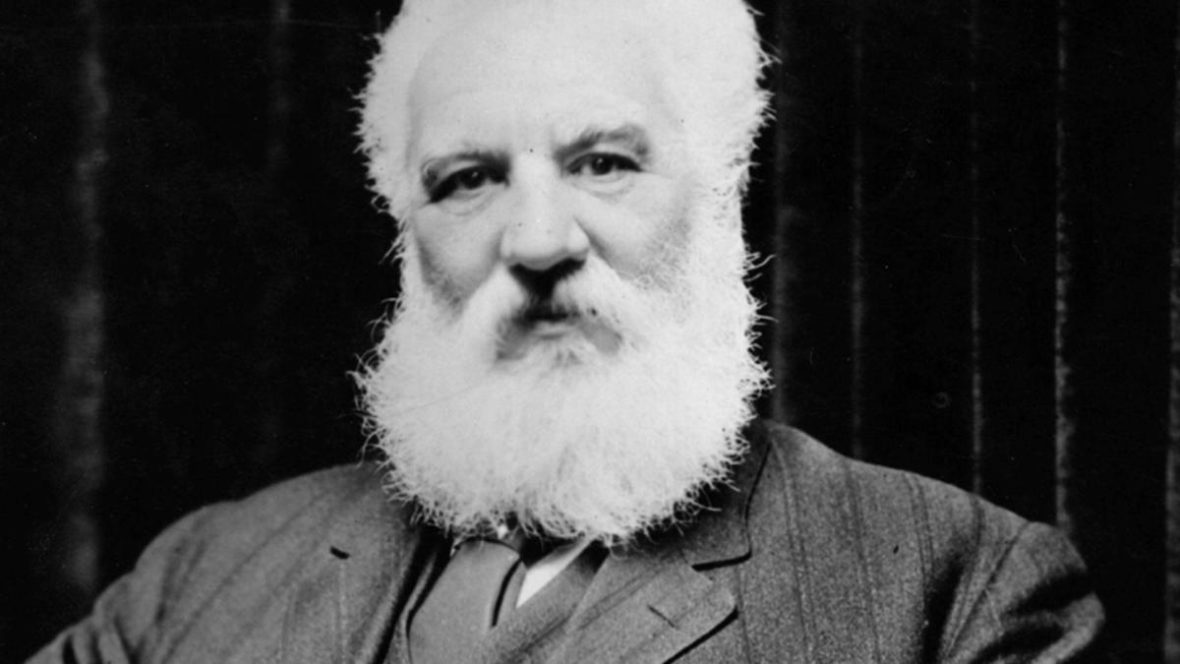Alexander Graham Bell was a Scottish-born scientist, inventor, engineer and innovator who’s credited with inventing and patenting the first practical telephone. He also founded the American Telephone and Telegraph Company in 1885. Take a look below for 30 more fascinating and interesting facts about Alexander Graham Bell.
1. Bell’s father, grandfather, and brother had all been associated with work on elocution and speech and both his mother and wife were deaf, profoundly influencing Bell’s life’s work.
2. His research on hearing and speech further led him to experiment with hearing devices, which eventually culminated in Bell being awarded the first U.S. patent for the telephone in 1876.
3. Bell considered his invention an intrusion on his real work as a scientist and refused to have a telephone in his study.
4. Many other inventions marked Bell’s later life, including groundbreaking work in optical telecommunications, hydrofoils and aeronautics.
5. Although Bell wasn’t one of the 33 founders of the National Geographic Society, he had a strong influence on the magazine while serving as the second president from January 7, 1898, until 1903.
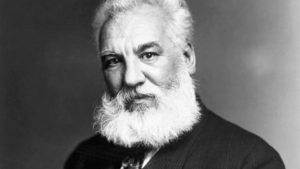
6. He was born on March 3, 1847 in Edinburgh, Scotland. He died on August 2, 1922 at the age of 75.
7. Bell didn’t have the middle name “Graham” until he turned 11 years old, when his father gave it to him as a birthday present. He’d earlier asked to have a middle name like his two brothers.
8. Bell became an excellent piano player at a young age.
9. When he was 23 years old, Bell and his parents moved to Canada.
10. Bell studied the human voice and worked with various schools for the deaf.
11. He experimented with sound, working with devices such as a harmonic telegraph, which used to send multiple messages over a single wire, and a phonautograph, which used to record sound.
12. He worked on acoustic telegraphy with his assistant, an electrical designer named Thomas Watson.
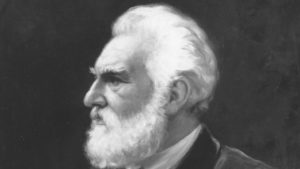
13. On February 14, 1876, Bell and an American electrical engineer named Elisha Gray both filed patents with the U.S. Patent Office covering the transmission of sounds telegraphically. There is debate about who got there first but the patent was awarded to Bell. A few days later, he succeeded in getting his telephone to work using elements similar to those f Gray’s water transmitter.
14. Bell’s first words with the working telephone were spoken to his assistant Watson and were along the lines of, “Mr. Watson, come here. I want to see you.”
15. Bell improved on the design of his telephone and by 1886, more than 150,000 people owned telephones in the United States.
16. Bell had a strong interesting in other scientific fields, conducting medical research, searching for alternative fuel sources, experimenting with metal detectors, developing hydrofoil watercraft and much more.
17. Both of his two brothers die from tuberculosis, which was a common cause of infant mortality in those days.
18. Bell didn’t go to school. He was educated at home by his mother. Together, they explored anything and everything that interested them, leading to the healthy development of wide-ranging interests and an insatiable curiosity about the world and its works.
19. Later on, Bell did go to a private school for one year in order to ready him for two years of more formal education at The Royal High School.
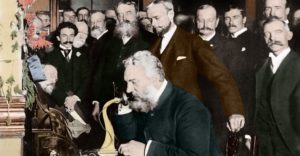
20. When he was 16 years old, Bell started his early research into speech mechanics. Even at such a young age, he took up a post at the Weston House Academy, teaching both music and elocution.
21. Bell’s first invention was a homemade wheat dehusking machine that he crafted out of paddles and nail brushes for his best friend’s father, who owned a flour mill.
22. He taught himself that speaking directly against his mother’s forehead helped her to “hear” through temporal conduction, a fact that fascinated him and played a role in his work.
23. Bell and his older brother Melville eventually created an automaton of the human head which would “speak” when a bellows pumped air through the artificial larynx, throat, and mouth. Different words were produced by adjusting the shape of the mouth and its inner workings.
24. Bell became a teacher at a school for the deaf and worked to help deaf students develop vocal communication.
25. While living in Ontario, Canada, Bell frequently visited the Six Nations reserve where he not only learned the Mohawk language, but also translated it into his father’s Visible Speech language that helped the deaf communicate. This earned Bell the title of honorary chief.
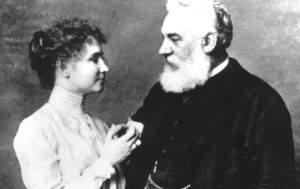
26. Bell began work on what we know as the telephone in an effort to save costs of constructing telegraph lines that could not support multiple lines.
27. In 1875, he produced his first simple receiver, which was capable of transforming electrical impulses into audible sound.
28. Unlike many new inventions, the telephone was adopted quickly. After only a year, the very first telephone exchange had been constructed in Connecticut, and the Bell Telephone Company was founded. In consequence of the rapid spread of telephonic communications, Bell soon became a very wealthy man.
29. Bell was awarded a number of prestigious prizes and went on to further develop experiments in many fields. He continued to develop technologies to help deaf people.
30. Bell was connected with the eugenics movement in the United States. In his lecture “Memoir upon the formation of a deaf variety of the human race” presented to the National Academy of Sciences on November 13, 1883, he noted that congenitally deaf parents were more likely to produce deaf children and tentatively suggested that couples where both parties were deaf shouldn’t marry.

